
PART 1 | 2 | 3
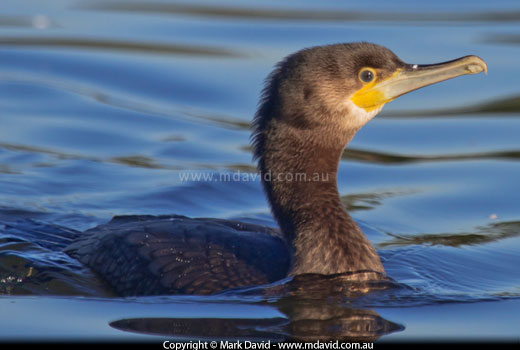
Great Cormorant
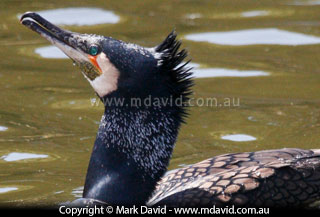

Phalacrocorax carbo
The largest in its family, these birds are big, funky-looking creatures. When stretched
out in flight their lower body can take on an almost feline appearance. They are really
good at swimming underwater and very good at catching fish too (which, of course,
they eat). They used to be called Black Cormorants.
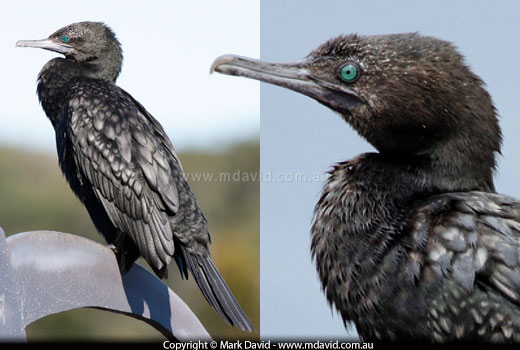
Phalacrocorax sulcirostris
You can distinguish these from the Great Cormorant by being smaller, and having a back
face. They feed on fish and you sometimes see them fishing in large groups. I’ve
read about them rounding up fish that way and it’s kind of fun watching a whole
lot of these birds diving under water together and then surfacing together some time later
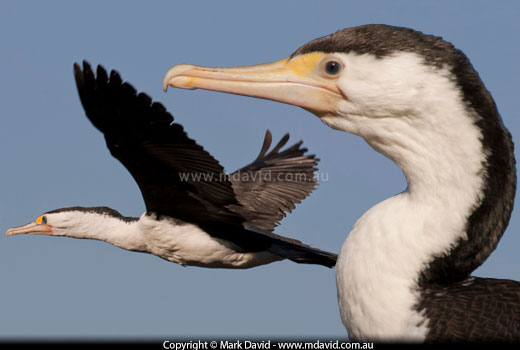
Phalacrocorax varius
Like the Great and Little Black Cormorants, the Pied Cormorant feeds on fish, but will also take
the odd crustacean. Its nest is a mass of dried twigs and other leaf material — I
always seem to see the nests in dead trees but apparently they might be built on other
surfaces as well. These birds can breed whenever the food supply is good enough
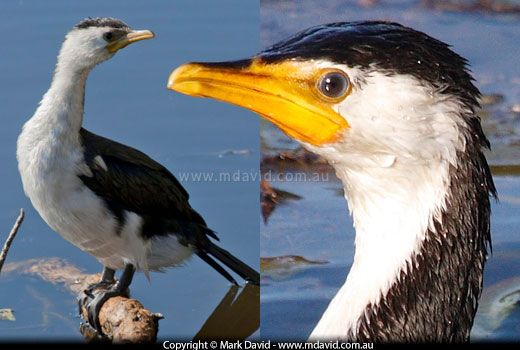
Phalacrocorax melanoleucos
Like their name suggests, these guys are smaller than the Pied Cormorant. They’re
a common bird, happy to feed on fish and crustaceans. After swimming, they’ll often
stand in a nice safe spot in the sun with their wings spread out to dry.
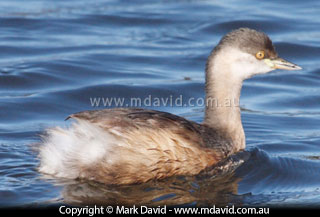
This pic could be of either a Hoary-headed Glebe (Poliocephalus poliocephalus) or an Australasian Grebe (Tachybaptus novaehollandiae). Outside of their breeding plumage it’s a bit tricky telling them apart, although my guess is this one is an Australasian Grebe. At a distance they could be mistaken for a small duck. These guys will often dive underwater when something scares them, which can make it difficult to get a good photo of one.

Copyright © Mark David. All rights reserved | Mark David on Google+